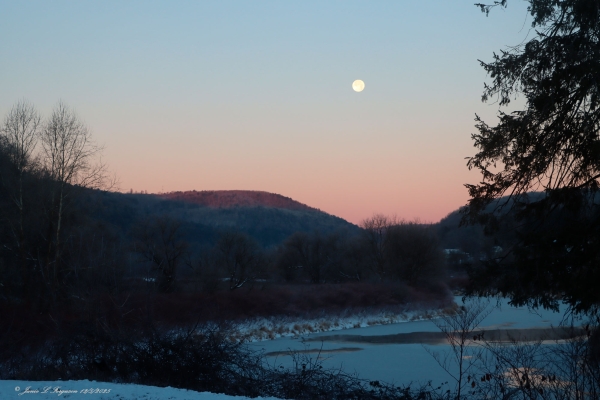” If we maintain our current usage rate, our natural gas reserves will be gone in 45 years. Oil will be gone in 50 years”
By Michael Stone, Andover NY
Recently, a lot of discussions have been happening regarding energy sources. With windmills and solar farms being built on our countrysides, much of the nation (and the world) is going all-in on renewable “green” energy. I’m not writing today to advocate nor decry this mindset.
Much of this discussion within NY State has come from the battle between mandates on new construction forcing zero-emissions energy usage and opposition from proponents of natural gas. Again, I’m not writing today to speak for one side or the other.
As you read this, you might be asking “Well, why are you writing this?” Simply put, much of the arguments that are pushing back against green energy and the push to go all electric are centered around our ability to choose for ourselves. I’m writing this today to say that the nature of choice is critical when the luxury of choice exists. Right now, it does. But down the line, whether or not we make the move today to prepare for it, that choice *will* be made for us.
So here’s where we get down to brass tacks: If we maintain our current usage rate, our natural gas reserves will be gone in 45 years. Oil will be gone in 50 years. Then it won’t be our choice to make. The choice will be electric or sit in the dark. It may not be within our lifetime, but it will be within our children’s lifetime, or our grandchildren’s. It’s countdown to 2075.
This is according to multiple sources, including the “Energy Institute – Statistical Review of World Energy”, BP Statistical Review, and the METGroup, which is not a “woke” electric-only energy organization, but an energy company with activities in natural gas trading, infrastructure, and industrial assets across 20 countries all over the world.
For purposes of transparency and clarity, these numbers will shift. The definition within this context of natural gas and oil “reserves” are “everywhere we currently know these resources exist within the ground where we can get to and extract”. We could find more. In all likelihood, we will find more. But we’ve already taken the easy stuff, as well as the good stuff. Finding the last pockets remaining on this earth will require more effort to extract, refine, and make useful to us. It will also take more energy (ironically) and more money, leading to higher costs. As an example, look at the oil being pumped in from Alberta, which is 141,000 square kilometers filled with tar sands oil. Is it oil? Sure. But tar sands oil is very sludgy and dirty. It requires huge amounts of infrastructure just to move around, but the refining process is by all standards incredibly intensive to get it to a useable crude oil state.
But when you don’t have much milkshake left in the glass, you do tend fight a bit harder for those last remaining loud slurps from the straw.
On the other hand (as far as numbers shifting), those projections are based on our current usage. Our current usage is not static, and it has been rising year after year. So we may find more, but it will be hard-fought and we will still use it faster.
This is the inherent problem with finite resources. Oil takes tens of millions of years to develop in the ground. Natural gas between tens to hundreds of millions of years. We’ve been using it faster than it’s being made… and by an absurd margin.
So we will move to all electric. By hook or by crook, we will make the choice or the choice will be made for us in 50 years or so.
My home is heated with a natural gas furnace, which, aside from replacing the blower motor every couple of years, is operating fine. I’ll also be dead in 50 years. Statistically, that’s just a likely fact. However, my personal feelings toward the matter is we owe it to our children to not put our heads in the sand and pretend this problem doesn’t exist in hopes that we can offload it onto their shoulders. We owe it to those who come after to put the work in now.
So yes, we face a situation right now where our electric infrastructure is aging out and is in desperate need of maintenance and bolstering along every single inch of that wire: from how it’s generated all the way down to how it’s brought into our homes. It’s also a difficult situation considering how much our electric bills have been rising in recent years. We’re all feeling the economic strain and it’s not an easy “sell” to lean into a solution while we’re holding our breath and silently praying every time we open that monthly envelope, looking for that next number to eat into our paychecks. Not to pile on the negativity, but we are also experiencing all of this while new datacenters are being built and AI energy consumption is exploding exponentially. It’s a perfect storm of awfulness and to be frank, a hell of a time to hear that milkshake straw sucking in more air than liquid.
I don’t want to close this editorial out on a down note, though. The fact is, 50 years may not be a lot of time within the scope of the work that needs to be done, but it is enough time. The first step to fixing a problem is admitting it exists, and if we can collectively do that, we still have the time it would take to roll up our sleeves and fix this problem for our kids and their kids.
Windfarms in the US kill roughly 1.17 million birds annually. That’s bad (of course it is). But stray cats kill 2.4 billion birds in the US annually. That’s 205,128% higher than wind. So let’s just take a beat and take in some context when dealing with scary numbers here. As far as blades winding up in landfills, being made primarily of fiberglass, that’s not a problem in terms of ground leaching, but it is a problem just in terms of taking up space with material that doesn’t break down easily. Fortunately, solutions are arising in the form of shredding, processing, and repurposing the material for other uses with several companies like Vestas aiming for zero blade waste by 2040.
Solar in the US is taking up fertile land that was once used for farming. However, also taking that into context, the biggest single crop by acreage grown in the United States is corn. Over 40% of all corn grown (with that percentage growing every year) is devoted to the production of ethanol. Farmers have been growing energy for a long time. Now they’re growing a different type of energy. Additionally, many farmers are adopting “agrivoltaics”, making the solar farm land work in conjunction with crops and grazing pastures, so the land isn’t otherwise wasted to the panels.
As far as solar disposal, they contain hazardous materials that can leach into soil and groundwater, including lead, cadmium, and cadmium telluride. However, more and more progress is being made toward recycling efforts including hydrothermal and delamination methods that can recover up to 95% of the materials, making the environmental impact of disposal *and* the environmental impact of new production significantly lessened.
This is about the time that advocates of nuclear energy speak up in opposition to solar and wind. In my opinion, this is a viable solution and a very worthy argument to be made, provided it’s done responsibly with construction and with waste management.
However, the clock is ticking. The most recent nuclear power plant to come online in the United States is the Vogtle Unit 3 in Georgia in 2023. From the beginning of the planning phase to finally coming online took 20 years, and bear in mind this was an expansion of an existing plant operating since 1987. Not a totally new groundbreaking construction of a facility. If we want to fully embrace a nuclear powered future and leave solar to China and wind to Europe, we need to start immediately.
Every solution has drawbacks and ramifications to consider. But we can either see that as a reason to endlessly bicker and hide away… or we can see that as an opportunity to dig in and get to work with innovation and forward solutions toward sustainable and clean energy.
Because by 2075, the choice will be made for us. The real question is, what will we do between now and then to prepare for it?
—
Michael Stone is a resident of Andover and is running as an Independent in this November’s election for Andover Trustee.







